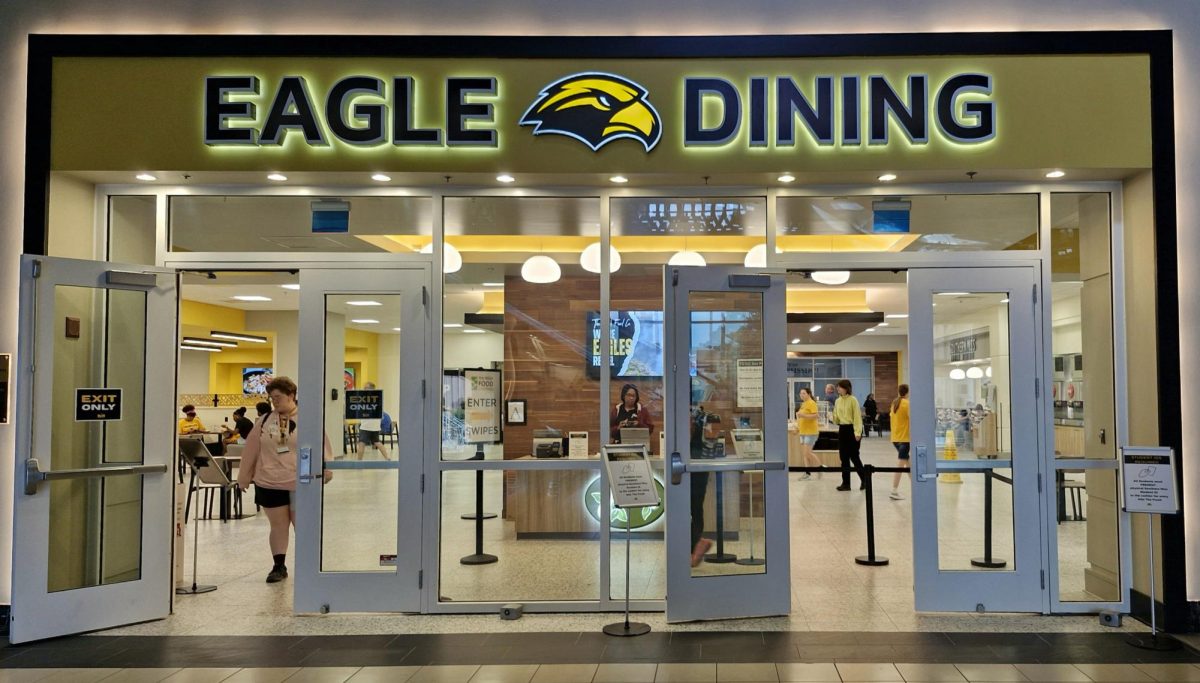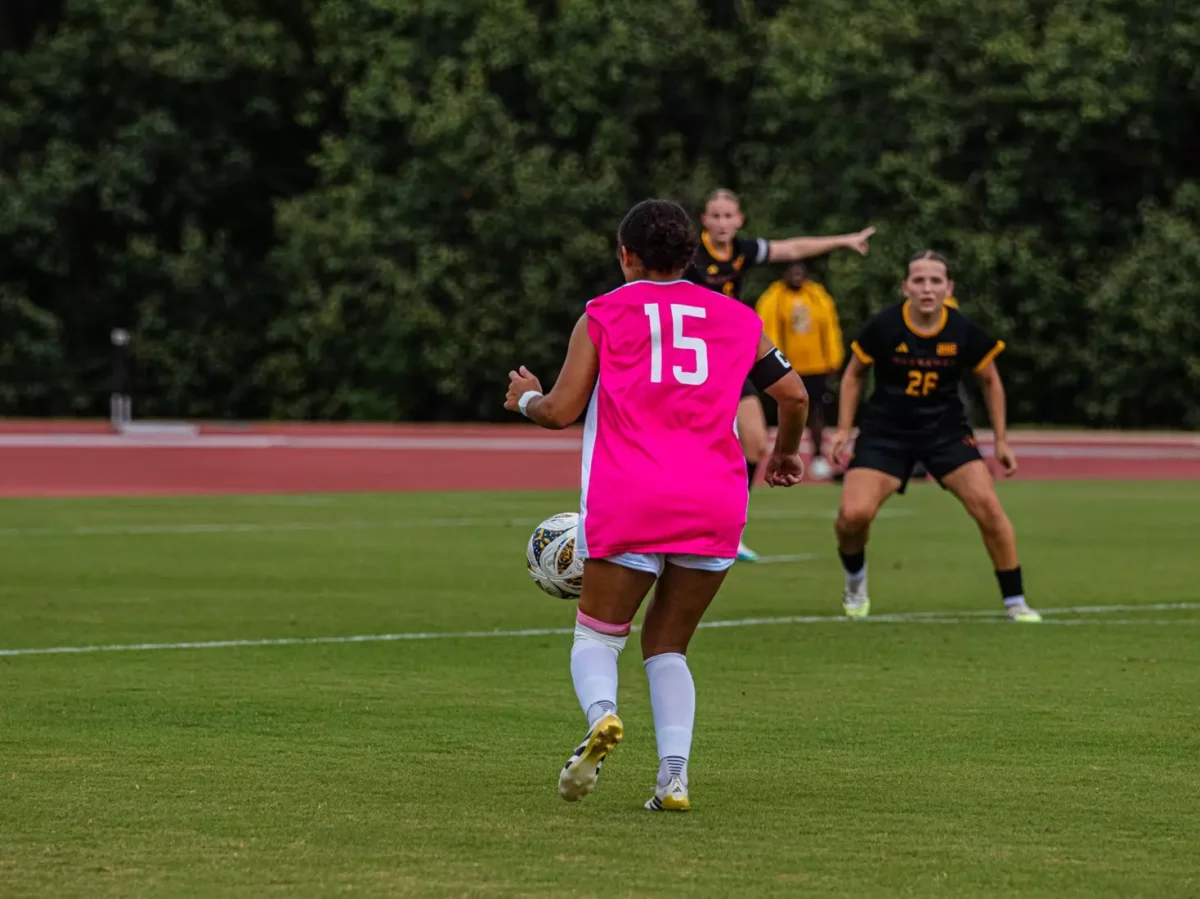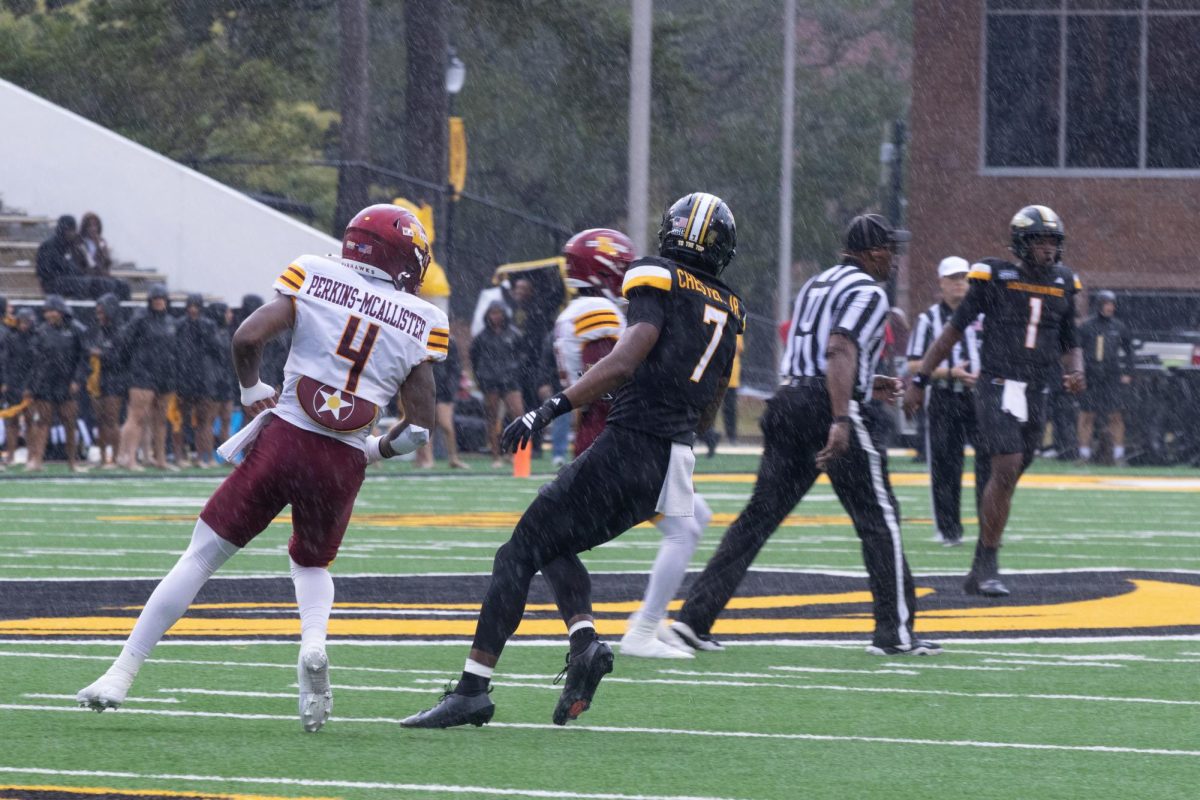If you’re like me, this entire budget situation is going over your head.
I mean seriously over your head, numbers dancing like sugarplum fairies and words like “reserves” and “revenue” flying around there like the little knockout canaries in old cartoons. Oftentimes, administration and reporters (much like myself) throw a lot of numbers, figures and titles at you, hoping you’ll figure out what is going on.
So this article is to the artists, the laymen and any other students out there who have no idea what everyone’s been talking about the past few weeks: a beginner’s guide to the budget situation.
The main reason why the school has a tighter budget this year is due to a decrease in enrollment. Not enough hens in the henhouse, per se.
According to the press release by Mississippi Public Universities, in the 2013-14 year we had 15,249 students. Now, in 2014-2015 we have only 14,845, a loss of around 400 valuable, tuition-paying students.
Now, according to the USM website, if each of those students pay the standard in-state undergraduate rate of $3,372, that’s a bare-bones minimum loss of over $1.35 million dollars in tuition money alone.
However, the school’s budget isn’t defined by tuition money alone. For however many total credit hours the university has from each student, that’s factored into an equation by the Institute of Higher Learning.
This equation takes the credit hours we have and weighs them. The percentage of weight that each university has determines how much money they’ll get from a predetermined set of funds. These funds are referred to as state appropriations.
The more credits and degrees we have each year, the better. So, if each of those 400 nonexistent students had taken 15 credit hours, we’re now losing 6,000 credit hours to factor into our equation, which is another large hit on the budget. 
Both of these sources, as well as other smaller sources, are referred to as revenue, or the money that the university takes in each year.
For 2014, according the current annual budget, the revenue for the Hattiesburg campus equals around $249 million. Out of this, state appropriations are $74 million and student fees (tuition) make up nearly $101 million.
As you can see, tuition is a much higher source of income for the university than state appropriations, but it hasn’t always been this way. While 10 years ago, state appropriations would have made up the majority of revenue, in the past few years, the two have flipped.
Bob Press, associate professor of political science and president of the Faculty Senate, spoke in a recent interview about the swap.
“What’s occurring is a perfect storm,” he said, quoting Hank Bounds, the commissioner of Higher Education. “Ten years ago, 65 percent of the revenue from higher education came to the state, and 35 percent came from tuition.”
The drop in revenue isn’t the only problem. Douglas Vinzant, vice president of finance and administration, spoke Friday at the Faculty Senate meeting about the need to put into university reserves.
“There are two types of reserves,” he explained. “The first are recurring reserves, which support ongoing operations. We currently have only $400,000.“
The second type of reserves, he explained, is “one-time” reserves. This is in case of emergencies.
According to Vinzant, we have enough money to function on operating reserve for only 18 days, when we really should have about 90 days’ worth of operating reserve.
What this means is in addition to the loss of tuition and appropriations money, the school must also put aside another $1.7 million into reserves. All of this loss of money means that the university must cut a total of $6.79 million from the overall budget, or 4.5 percent of everything.
Many students may wonder why the enrollment is dropping. Most blame it on our football record, some blame it on our football record, but a few still blame it on our football record. However, despite what the SEC teams will tell you, football is not the most important thing about a university.
What’s actually occurring is a drop in the incoming freshman population.
“The number of students graduating from public and private high schools in the state of Mississippi is declining,” Vinzant said. “So, what that means is that competition has been ramped up for capturing that same number of students in a declining market.”
Many students are also choosing to attend a two-year institution and transfer in order to save money. For example, according to the Oak Grove High School counseling center, the school recently graduated a large class, with 92 percent of students choosing to attend higher education.
Out of that 92 percent, only 52 percent went to a four-year university while 48 percent chose the cheaper route of attending a two-year junior college. According to the Presbyterian Christian School counseling center, they graduated a class of 71 with 30 percent choosing to attend a junior college.
What this means for Southern Miss is an increased interest in recruitment and retention of students. Faculty will be encouraged to increase availability and go the extra mile. Residence Life has updated their program initiatives and continued to push the residence assistants to make connections.
Now here’s the downside to all of this: these budget cuts will affect everyone in some way or another, some more than others. While no programs are in threat of being cut, according to Provost Denis Wiesenburg, certain programs will bear less of the brunt of the cuts due to accreditation needs.
These budget cuts mean that, for students, classes will be larger, there will be fewer class sections offered, which may cause trouble in scheduling and there will be fewer professors replacing the open faculty positions.
However, there is no reason to panic or riot in the streets. Southern Miss will continue to excel in the arts, polymer science, education and somehow manage to always be awesome in the face of adversity.
For more continuing information on the budget cuts, keep an eye out for USM Mailouts from administration or future editions of the Printz.





















